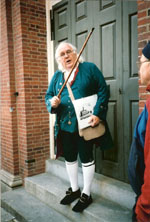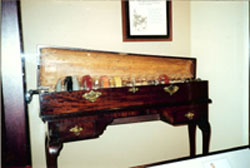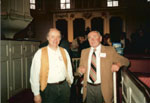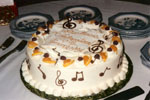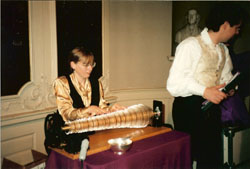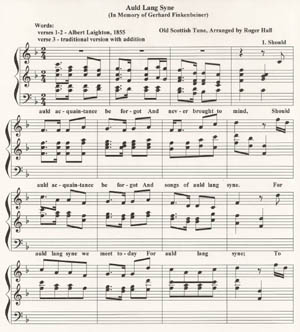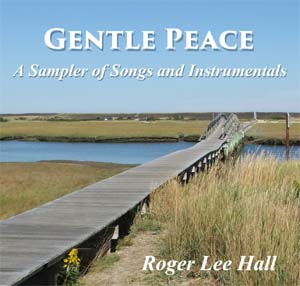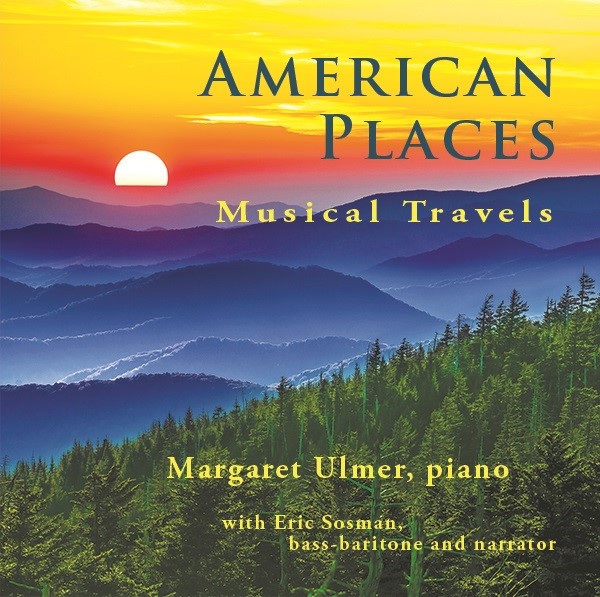
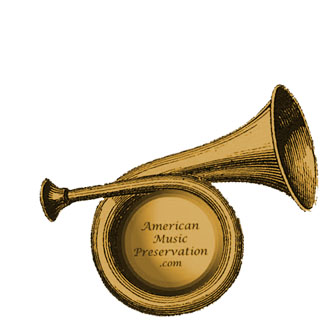
Benjamin Franklin and
his Glass Armonica

- Benjamin Franklin in Boston
- Benjamin Franklin's comments on music
- Glass Music International Festivals
- Benjamin Franklin and Wolfgang Amadeus Mozart
- Resource Recordings
Benjamin Franklin in Boston
Benjamin Franklin was born on Milk Street in Boston, Massachusetts on January 17, 1706. His father, Josiah Franklin, was a tallow chandler, a maker of candles and soap, who married twice. Josiah's marriages produced 17 children; Benjamin was the tenth and youngest son. He attended Boston Latin School but did not graduate.
His schooling ended at ten, then worked for his father, and at 12 he became an apprentice to his brother James, a printer who published the New England Courant, the first truly independent newspaper in the colonies. While a printing apprentice, he wrote under the pseudonym of 'Silence Dogood' who was ostensibly a middle-aged widow. His brother and the Courant's readers did not initially know the real author. James was not impressed when he discovered his popular correspondent was his younger brother. Franklin left his apprenticeship without permission and in so doing became a fugitive.
At the age of 17, Franklin ran away to Philadelphia, seeking a new start in a new city.
[Note: Franklin's birthplace on Milk Street (now demolished) was located across the street from the present day Old South Meeting House in Boston.]
In Memory of Boston's Benjamin Franklin
For nearly a quarter of a century, Bill Meikle gave countless tours in the Boston boyhood neighborhood of Benjamin Franklin and participated in numerous programs around the region, including Glass Music International Festivals.
He received two New England Emmy Awards for his Benjamin Franklin portrayal.
For many people he simply was Benjamin Franklin.
As witty and wise as Franklin, he once told a group of students: "In nature, things are not wasted. I'll be back. If I do come back I hope it's thin."
Bill Meikle died on 19 December 2006. He was 71.

Benjamin Franklin's comments on music
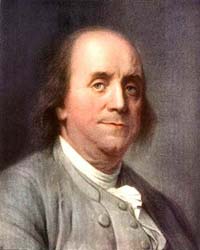
When his brother sent a ballad that he had written, Benjamin Franklin wrote back from England, where he was serving as a representative, and expressed the sentiments of the ballad.
He wrote:
If you had given it to some country girl in Massachusetts, who has never heard any other than psalm tunes, or Chevy Chase, but has a naturally good ear, she might more probably have made a pleasing popular tune for you, than any of our masters here.
Franklin was complaining about the composers he had heard in London.
Of them he wrote:
The reigning taste seems to be quite out of nature,
or rather the reverse of nature.Franklin is seldom thought of in connection with music, but he both delighted in it and thought clearly and critically about it ...Somehow or other, sooner or later he found time to learn to play the harp, the guitar, and the violin, as well as the [glass] harmonica.
--Carl Van Doren, 1938In a letter dated July 13, 1762 to his friend Giambatista Beccaria in Turin, Italy, Benjamin Franklin wrote from London about his musical instrument:
This instrument is played upon, by sitting before the middle of the set of glasses as before the keys of a harpsichord, turning them with the foot, and wetting them now and then with a sponge and clean water. The fingers should be first a little soaked in water and quite free from all greasiness; a little fine chalk upon them is sometimes useful, to make them catch the glass and bring out the tone more readily. Both hands are used, by which means different parts are played together. Observe, that the tones are best drawn out when the glasses turn from the ends of the fingers, not when they turn to them.
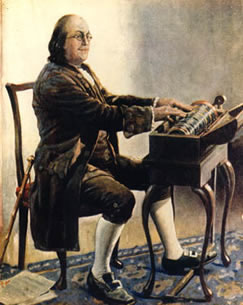
Benjamin Franklin playing his glass harmonica by Alan Foster, 1926In his letter, Franklin also described seeing Mr. E. Delavel of the British Royal Society who had set up a series of drinking glasses to play music on them. Franklin later had devised a better system using thirty-seven glass hemispheres with a hole in the middle, the largest one being nine inches and the smallest three inches in diameter. The hemispheres were mounted on an iron spindle and placed in a wooden case on four legs with the glasses turned by the foot, like a spinning wheel.
In his letter to Beccaria, Franklin described his new instrument in great detail. Here is an excerpt:
The largest glass is G a little below the reach of a common voice, and my highest G, including three compleat octaves--To distinguish the glass the more readily to the eye, I have painted the apparent parts of the glasses, every semitone white, and the other notes of the octave with the seven prismatic colours, viz. C, red; D, orange, E, yellow; F, green, G, blue; A, indigo; B, purple, and C, red again--so that glasses of the same colour (the white excepted are always octaves of each other.
This illustration shows a replica of Franklin's type of glass instrument, located at the Franklin Institute in Philadelphia...
Franklin ended his letter to Beccaria with this explanation:
The advantages of this instrument are, that its tones areincomparably sweet beyond those of any other; that they may be swelled and softened at pleasure by stronger or weaker pressures of the finger, and continued to any length; and that the instrument, being well tuned, never again wants tuning. In hon our of your musical language, I have borrowed from it the name of this instrument, calling it the Armonica.
[above information from the original writings of Benjamin Franklin; and the Pulitzer Prize-winning biography, Benjamin Franklin, by Carl Van Doren, 1938/ reprinted by Penguin Books, 1991, pages 297-98.]
Glass Music International Festivals
1997
In April of 1997, the 10th Glass Music International [GMI] Festival was held in Boston. Many musicians from America and Europe participated in this festival and Benjamin Franklin himself (portrayed by Bill Meikle) was there too.
To honor Benjamin Franklin and his Armonica (or Glass Harmonica), a special piece was arranged and performed by Roger Lee Hall [shown in picture with Festival Producer, Gerhard Finkenbeiner].
Roger's arrangement was of Mozart's Adagio in C Major, K. 617a (1791), with an added text. This piece was performed during a glass music concert at King's Chapel in Boston. The singer was Rosalind Landman of the Boston Bel Canto Opera Company, accompanied on glass harmonica by Lynn Drye. Reproductions of Dr. Franklin's Glass Harmonica were used in the concert, built by G. Finkenbeiner of Waltham, Massachusetts.
At the end of this concert, Roger sang the best known song from Civil War Boston. He was accompanied by several glass music musicians as they performed an original version of
"Battle Hymn of the Republic."
There was a special cake made to celebrate the 10th anniversary of GMI.
This picture shows musician Lynn Drye playing one of the Finkenbeiner glass harmonica instruments...
2000
Benjamin Franklin was also celebrated at the next Glass Music International Festival, held in Philadelphia, Pennsylvania in April of 2000.
Once again Roger Lee Hall arranged special music, this time in memory of Gerhard Finkenbeiner (1930-1999), who had disappeared and was thought to have died in a plane crash, though the plane was never found.
The memorial tribute included two pieces for glass harmonica by Roger Hall, performed by Alisa Nakashian-Holsberg.
The spoken introduction for these two pieces was presented by Ralph Archbold, who portrayed Benjamin Franklin for many years in Philadelphia.
Benjamin Franklin and Wolfgang Amadeus Mozart
The year 2006 marked the 300th anniversary
of the birth of Franklin (1706-1790)
and
the 250th anniversary
of the birth of Mozart (1756-1791)
Composer Roger Lee Hall produced a composition (Op. 30)
dedicated in memory to Gerhard Finkenbeiner
and based on a song favorite of Benjamin Franklin
and a piece by Wolfgang Amadeus Mozart --"Agnus Dei" based on Mozart's Adagio fur Glasharmonica, K. 356 (617a)
"Variations on Auld Lang Syne" using a 19th century New England text by Albert Laighton.
"Variations on Auld Lang Syne" is on this CD:

A List of CDs with American Music
available on this page:
Resource Library of Recordings
American Music Recordings Archive [AMRA]
Contact Information
Send your inquiries to:
Help support the mission of theCenter for American Music Preservation (CAMP)
Order this enjoyable CD
© 2006 PineTree Productions/ updated: 2020. All Rights Reserved for original material on this website.
Contact: pinetreepro@aol.com





